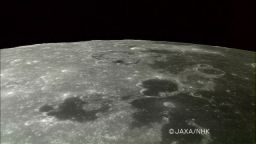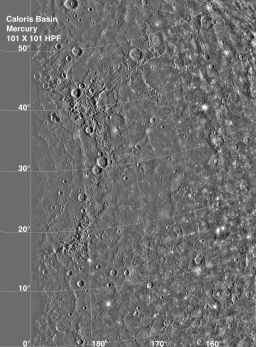Emily Lakdawalla • Mar 26, 2009
Brown-Vernadsky Microsymposium 2009: The talks
Yesterday Samuel Schon sent me his extensive notes from the two-day Microsymposium held last weekend, before the Lunar and Planetary Science Conference started, on the topic of volcanism on the Moon and Mercury. Sam is a third-year graduate student in the planetary geosciences department at Brown University, studying Mars geomorphology. I've posted his complete notes here; rather than post them all inline in the blog, I thought it'd be better to pull out some of the highlights. So the following is paraphrased from Sam's notes.
The choice of topic reflects the resurgence of scientific interest in the Moon and Mercury due to the new missions that have recently started returning data from the two cratered worlds: Kaguya, Chandrayaan-1, Chang'e 1 (and soon Lunar Reconnaissance Orbiter) from the Moon, and MESSENGER from Mercury. Sam said that there were two main questions that presenters were attempting to answer: how much of Mercury's crust is secondary, and for how long and how recently was the Moon volcanically active? To even understand what the first question is talking about, we need to step back a bit to talk about primary, secondary, and tertiary crusts.

JAXA / NHK
HDTV image of the Moon from Kaguya
This is a still from the first high-definition movie shot from a spacecraft beyond Earth orbit. Kaguya was in a 100-kilometer-altitude polar orbit around the Moon on October 31, 2007 when it captured the movie. This frame shows some of the smooth lava-filled plains at the western edge of Oceanus Procellarum on the lunar nearside, an example of secondary crust. The primary anorthosite crust of the lunar highlands occupies the left side of the image. The Kaguya movie, which runs eight times faster than real time, can be viewed here.All of these crusts form through volcanic processes, so inventorying the evidence for volcanoes and associated deposits on the Moon and Mercury is important. Lisa Gaddis gave a talk about pyroclastic deposits found on the Moon, saying that more than 75 of them have been identified, commonly associated with floor-fractured craters, a type of crater that's also been seen on Mercury. Laura Kerber looked at the kinds of volcanic vents seen on Mercury and, through mathematical modeling, concluded that Mercurian volcanism involved more volatile gases than the Moon did. This isn't really surprising -- the "big whack" hypothesis that explains the formation of the Moon suggests that the Moon would be lacking in lots of those volatiles, which would have been lost as a result of the fantastic temperatures and pressures of the collision -- but it's always good when different lines of research point to the same conclusion. For context, Sam said, the lavas that erupt from Earth's spreading seafloor contain similar amounts of volatiles, at levels of a couple thousand parts per million, to what Kerber's models predict for Mercurian lavas.
To understand the geologic history of both the Moon and Mercury, researchers would like to be able to state absolute numbers for the ages of volcanic activity. For the Moon, we've returned rock samples that have been age-dated in the laboratory, so the chronology is fairly well established, at least for the regions visited by astronauts and sample return missions. At Microsymposium Harry Hiesinger summarized efforts to extend these ages over the rest of the Moon, and he concluded that mare volcanism has been active over a very long period of time -- 2.8 billion years, in total -- extending from about 4 billion to 1 billion years before the present.

NASA/JPL/Mark Robinson
Mercury's Caloris Basin (high-pass filtered)
The Caloris Basin is one of the largest basins in the solar system at approximately 1,550 kilometers in diameter. Only half of it was seen by Mariner 10 as it sped past Mercury on March 29, 1974. This view was "high-pass filtered" to remove the brightness and darkness effects of the solar illumination angle, to better emphasize topographic features. A comparison of the interior of Caloris (to the left) and the exterior (to the right) shows that the unusually smooth terrain outside Caloris displays fewer craters than the interior.Caleb Fassett also talked about crater counting on Mercury, focusing on a different problem: if you count craters within the giant Caloris basin, and count craters on the outside of the basin, you'll find that the interior plains of Caloris have a higher crater density than the exterior plains, especially at small diameters. This is really counterintuitive. The mental model that most people have of large impact basins is: impact happens, digs a big hole in the ground, later if there's volcanism the hole gets filled with flat lava plains. So big basins generally have more craters outside than inside. Caloris is the opposite. What this really has to mean is that the plains outside Caloris have been modified since the Caloris impact, most likely by volcanism, to erase the smaller craters.
Thanks again to Sam for his notes, and again, you can get the full details here.
The Time is Now.
As a Planetary Defender, you’re part of our mission to decrease the risk of Earth being hit by an asteroid or comet.
Donate Today

 Explore Worlds
Explore Worlds Find Life
Find Life Defend Earth
Defend Earth

